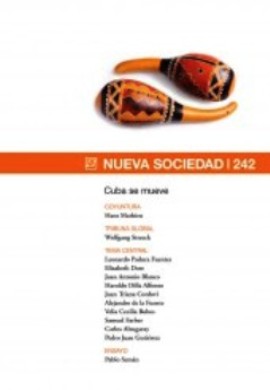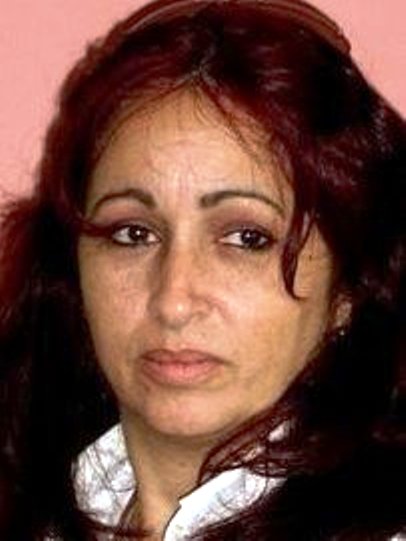January 31, 2012 | Haroldo Dilla Alfonso*
HAVANA TIMES, from Cubaencuentro, Jan 30 — The recent collapse of a building in the Centro neighborhood of Havana is sad news that speaks to us of dead, injured and homeless – tragic losers of the nation’s “updating” of its model.
But the news isn’t surprising.
The only surprise is that it doesn’t happen more often.
In fact, if this doesn’t happen every day in the Cuban capital, it’s because our architects and engineers left us with a solid housing stock, one proven by the test of time and generations of occupants.
The condition of housing has been complemented by of our fellow citizens, whose one-thousand-and-one ways of shoring up those crumbling buildings will someday have to be chronicled. They somehow manage to continue living in these structures until gravity finally catches up with them, these defiant challengers.
I’m not going to dwell on a balance of accomplishments and failures of the city over this long post-revolutionary era. I’m just saying that, even considering the usual benefits, the city lost much more than what it should have lost to achieve more balanced regional development across the nation as a whole.
It’s missing a lot because it lost the most dynamic segment of its middle and intellectual class; it lost its excellent infrastructure in the heat of neglect and carelessness; and finally it lost its particular metropolitan character due to the mediocre plebeian stoicism of its post-revolutionary political class.
To compensate themselves for their revolutionary efforts, a new leadership layer took special care to redistribute the best homes in the best places and to reserve exceptional sites for their own recreational pleasures.
Havana was sacrificed by a post-revolutionary elite who understood the change as anti-urban stubbornness and who saw the “new man” (to quote Emma Alvarez Tabio) as the noble savage laying constant siege to the city.
We still recall the Havana invaded by farmers, cattle fairs on the grounds of the Capitolio, Fidel’s failed coffee belt around Havana and his ridiculous idea of moving the capital to the small eastern town of Guaimaro.
However, the city ultimately suffered the conversion of architectural gems into rooming houses and government offices, to which were added makeshift garages, sheds in gardens and terraces, rooms where once existed gates and balconies, and the famous “barbacoas” (second floor additions), which have all pushed these buildings to the extreme limits of their physical tolerance.
Restored Old Havana Building. Photo: Caridad
If from the early revolutionary years we can point to a respectable architectural legacy along with achievements on behalf of the urban majority (as evidenced through accomplishments such as the Habana del Este planned community), the Pastorita city-garden, Cubanacan art school), what followed was pathetic: formalized overcrowding (whose most well-known expression is the Alamar “projects”) and one of the most ghastly buildings in the world: the Soviet Embassy.
Due to policing that prevented the growth of slums on the urban periphery, as occurs in almost all Third World cities, the city ended up swallowing its marginality. This is manifested in unprecedented overcrowding that gives life to about 10,000 tenements in which their occupants live in some of the most subhuman conditions.
My fear is that we are beginning to experience another phase of the history of this city. The “socialist” city (mediocre and boring) is giving way to another city whose “brand” is precisely the metropolitan situation that was denied for five decades – with its glamor, mysteries and nights of sequins and sex.
This is precisely the Havana that City Historian Eusebio Leal restored to the extent of both his own Hispanophile and courtesan inclinations as well as to the present and potential tastes of consumers.
The Havana that’s being designed will lie along the coast with its extensive golf courses and exclusive marinas. It is a Havana that will have little to do with the poor people who lost homes and family members in the recent Infanta and Salud building collapse.
Havana is beginning its gentrification process in the heat of the legalized housing market, which while still lukewarm is nevertheless inexorable. Elegant Havana will again take shape where now live the old political elite and increasingly the new emerging elite, intimately tied together, in the metamorphic process given to us by the general/president with his “updating.”
This is the Havana of future Cuban capitalism.
“Havana A” will bypass those people who — like the victims living on Infanta and Salud — every night fear a disaster. For these people, like for the thousands of victims who exist in shelters, like the hundreds of thousands waiting for a new home or the repair of an already existing one in the capital, what will remain is “Habana B”: a city of the poor and impoverished, one with the worst services and the worst environmental conditions.
They no longer even have hopes for units in Alamar. The Cuban government, in the process of abdicating its social responsibilities, has left only one option to those who live on the island: cheap loans for housing repairs. What’s more, access to this assistance is only possible through this system of shared misery and monopolized power that the degraded Cuban elite insist on presenting as an option for the future.











